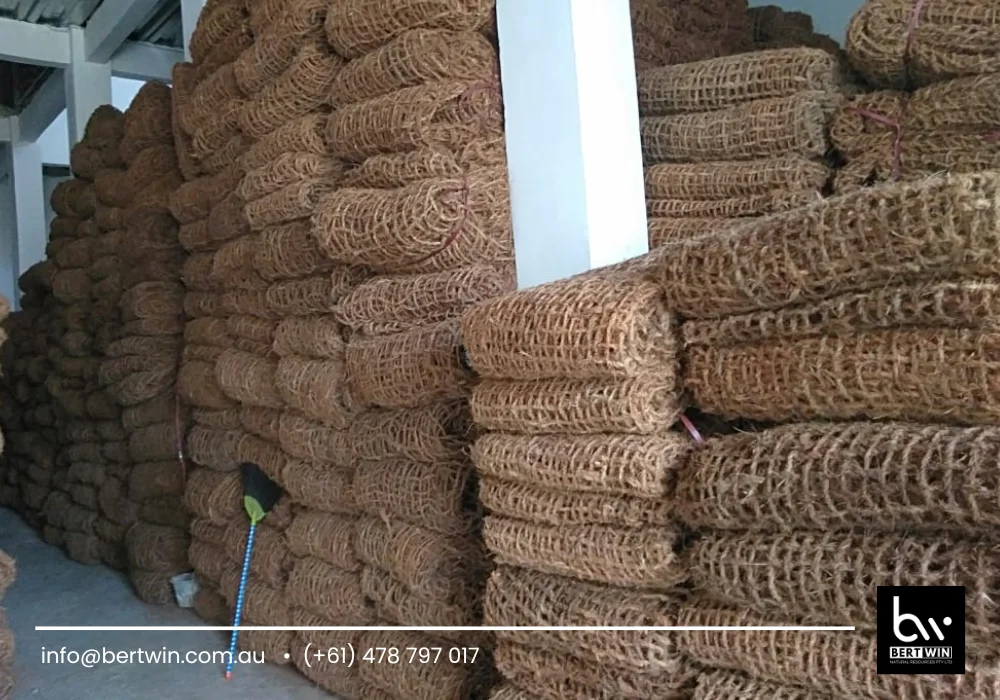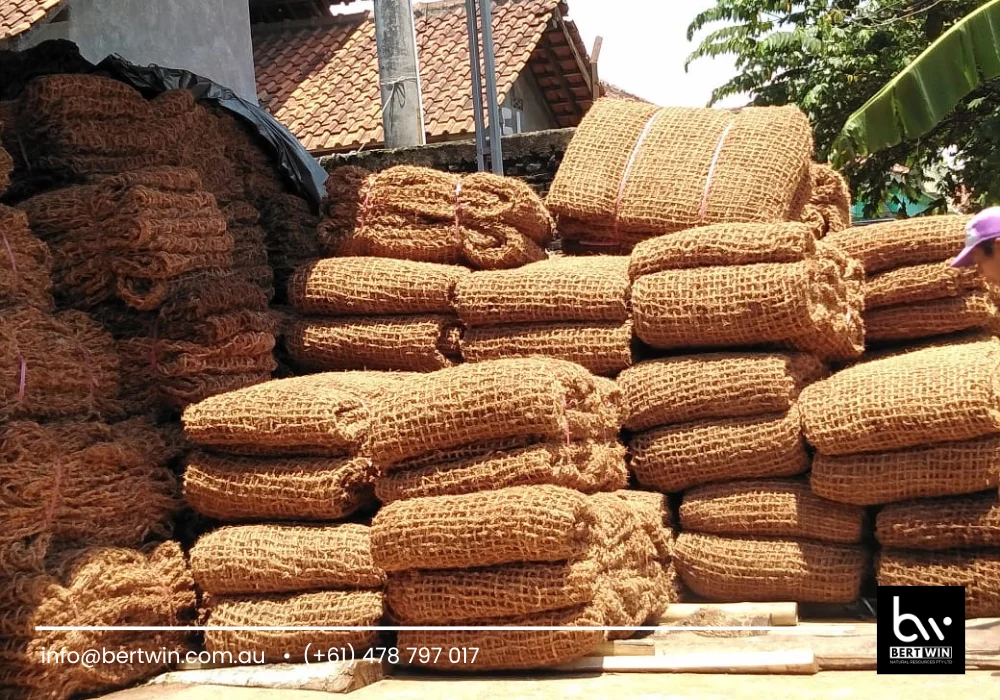Introduction to Coco Mesh for Land Reclamation
As environmental concerns rise, Coco Mesh for land reclamation is becoming a preferred solution in eco-restorative engineering. Coco mesh, made from the natural fibers of coconut husks, is ideal for rehabilitating degraded or man-made lands such as coastal regions, construction zones, and deforested areas. This biodegradable material promotes stability, supports new plant growth, and helps prevent further degradation.

What Is Coco Mesh?
Coco mesh, also referred to as coir netting or coir mesh, is a woven mat created from coconut coir fiber. Known for its durability and eco-friendly properties, it is widely used to control erosion, stabilize soil, and encourage vegetation in areas where natural topsoil has been stripped away or displaced.
Benefits of Coco Mesh in Land Reclamation
1. Natural Soil Stabilization
One of the biggest challenges in land reclamation is preventing soil erosion. Coco Mesh for land reclamation provides a protective barrier that anchors the soil, especially in areas prone to wind or water runoff. Its natural texture clings to the ground, helping maintain soil structure and preventing displacement.
2. Encourages Vegetative Growth
The porous design of coco mesh allows seeds to germinate and roots to penetrate easily. By enhancing moisture retention and shielding the soil from direct sun, coco mesh creates optimal conditions for grass, shrubs, or other plant life to thrive in reclaimed lands.
3. Eco-Friendly and Biodegradable
As a 100% natural product, coco mesh decomposes over time, enriching the soil with organic nutrients. This decomposition process leaves no harmful waste, aligning with environmentally sustainable practices.
Common Applications in Reclamation Projects
- Reclamation of coastal areas
- Reforestation of degraded hillsides
- Rehabilitation of construction or mining land
- Slope stabilization on highways or railways
- Restoration of riverbanks and lakeshores
Each of these projects benefits from the soil-holding and vegetation-supportive properties of coco mesh.
How to Install Coco Mesh
Installing Coco Mesh for land reclamation involves a few simple steps:
- Clear the area of debris and level the ground.
- Unroll the coco mesh over the designated space.
- Secure the mesh using wooden pegs or biodegradable fasteners.
- Apply seeds or saplings under or through the mesh, depending on the vegetation type.
Regular watering and monitoring ensure successful vegetation establishment over time.
Environmental and Social Impact

Coco mesh plays a significant role not only in physical restoration but also in environmental rehabilitation. It:
- Enhances soil fertility naturally
- Restores habitats for local wildlife
- Reduces dependency on synthetic materials
- Encourages community-based sustainability projects in rural areas (especially in coconut-producing countries)
Cost and Efficiency Benefits
Using coco mesh reduces long-term maintenance costs and labor since it naturally integrates into the ecosystem. There’s no need for removal, reapplication, or chemical soil enhancers. It is especially beneficial in large-scale government and private reclamation initiatives looking to meet green infrastructure goals.
Conclusion
Coco Mesh for land reclamation provides an eco-conscious, efficient, and effective method to recover degraded lands. It ensures long-term soil protection, promotes vegetation, and contributes to restoring ecological balance. Whether for urban development or environmental restoration, coco mesh is a trusted ally in sustainable land management.
For further information, you may contact WhatsApp at (+61) 478797017 or via email at info@bertwin.com.au.
